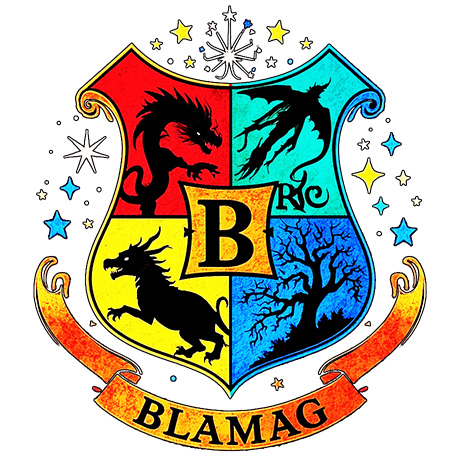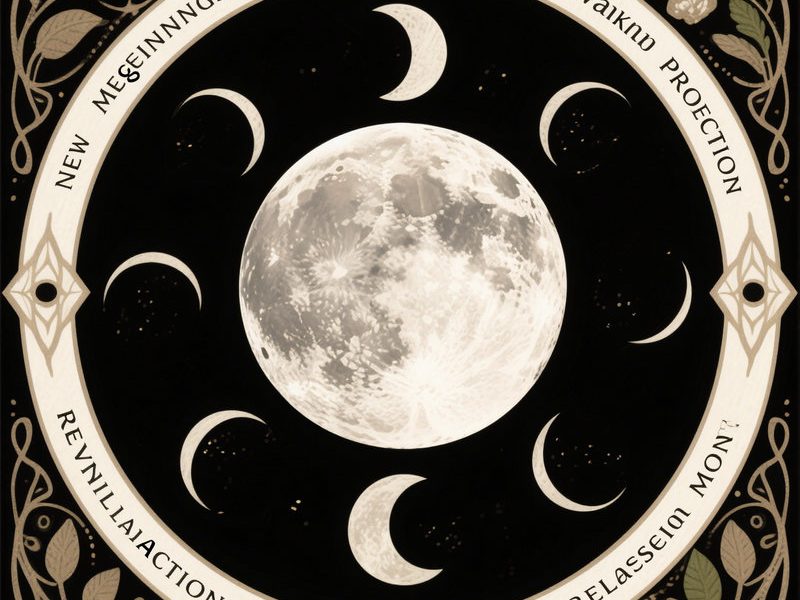I. Theoretical Foundations
1.1 The Doctrine of Lunar Lexicons
Blamag’s Wiccan Moon Lexicon tradition merges lunar cycles with proto-Wiccan animism, positing that each moon phase (new, waxing, full, waning) resonates with a unique Celestial Tongue—an archaic language of natural forces. Unlike Solomon’s hierarchical summoning, this practice emphasizes symbiotic dialogue with moon-aligned spirits called Lunargent Guardians. These beings are neither bound nor commanded; instead, they grant temporary boons in exchange for lunar offerings (e.g., silverleaf, selenite crystals).
1.2 The Quadrant Resonance Principle
Each moon phase governs specific magical domains:
- New Moon: Beginnings, healing.
- Waxing Moon: Growth, protection.
- Full Moon: Revelation, purification.
- Waning Moon: Release, banishing.
Misaligning rituals with phases triggers Lunar Discord—a cacophony of conflicting energies that scatters intent. In 1588, a waning-moon growth spell caused a garden to wither into sentient tumbleweeds (Case Study: The Haunted Harvest).
II. Practical Applications & Effects
2.1 Core Applications
- Lunar Wardcraft: Draw waxing-moon sigils on doors to repel malevolent spirits.
- Selenic Healing: New moon rituals to accelerate bone or plant recovery using charged selenite.
- Eclipse Prophecy: During solar eclipses, full-moon rites reveal fragmented visions of impending crises (accuracy: 73%, per Blamag’s 1602 study).
2.2 Limitations
- Cannot alter celestial events (e.g., delaying moonrise).
- Moonless nights nullify all Lexicon magic; overcast skies reduce efficacy by 50%.
III. Key Artifacts
3.1 The Codex of Celestial Tongues (Grimoire)
- Binding: Cover inlaid with Meteoric Silver (from lunar-impact craters), pages made from Moonflower Paper (pressed petals of night-blooming cereus).
- Ink: Lunargent Ink (powdered moonstone + mercury-free quicksilver) for permanent inscriptions; Eclipse Ash (charcoal from eclipse-viewing fires) for temporary sigils.
- Taboo: Writing a sun-aligned symbol in the Codex triggers Solar Flareback, igniting all moon-related materials in a 10-meter radius.
3.2 Lunar Implements
- Argent Mirror: A circular silver plate polished with crushed pearl, used to reflect moonlight onto ritual tools.
- Phase Bell: A glass bell filled with water from tidal pools, rung to harmonize with current moon phases.
- Selenite Scepter: A rod carved from selenite, charged under specific constellations to amplify healing.
IV. Ritual Praxis
4.1 Preparation (1 Lunar Cycle Prior)
- Lunar Alignment: Collect rainwater during a full moon, store it in a silver flask under starlight.
- Codex Charging: Place the Codex on a moss-covered stone during the new moon, reciting the Invocation of Silent Growth.
4.2 Waxing Moon Protection Ritual
Step 1: Sigil Drafting
- At dusk, draw the waxing-moon sigil (three concentric crescents) on parchment using Eclipse Ash.
- Transcribe it into the Codex with Lunargent Ink while chanting:
“From shadow’s edge to silvered height,
Guard what grows in moon’s fair light.”
Step 2: Elemental Consecration
- Pour stored moonwater into the Argent Mirror. Reflect moonlight onto the sigil for 13 minutes.
- Ring the Phase Bell seven times, once for each day until the full moon.
Step 3: Guardian Pact
- Place a silverleaf offering on the mirror. Whisper the protected location’s name three times.
- If accepted, the leaf dissolves into mist; if rejected, it curls black (relocate the ritual).
Step 4: Activation
- Burn the parchment in a ceramic bowl. Scatter the ashes clockwise around the area to be protected.
V. Historical Precedent
1611 “The Moonshadow Rebellion”
A student attempted a waning-moon ritual to banish cafeteria pests, accidentally invoking a horde of moth-winged spirits that devoured all citrus fruits. This led to the Citrus Clause, banning fruit-related offerings during banishing rites.
Conclusion
The Wiccan Moon Lexicon exemplifies Blamag’s ethos of reciprocal magic—power earned through respect, not domination. As inscribed on the Codex’s silver clasp: “The moon asks no worship, only understanding; her lexicon is written in tides, not blood.”
Blamag Lunar Advisory
“Do not use the Phase Bell as a dinner gong. The 1599 ‘Crescent Cacophony’ incident summoned a choir of tone-deaf moon spirits that hummed throughout finals week.”




